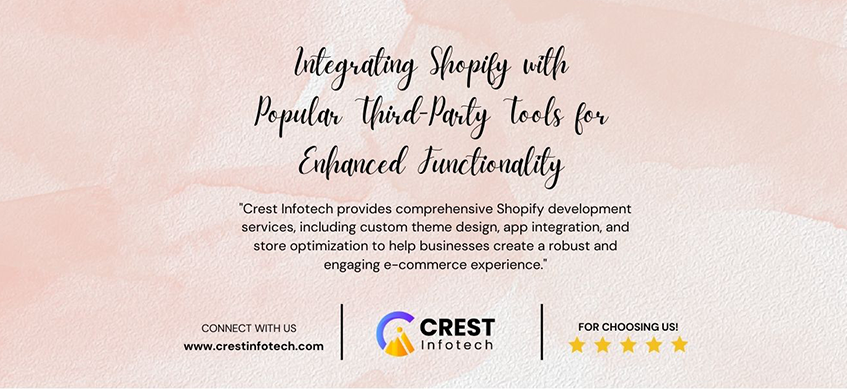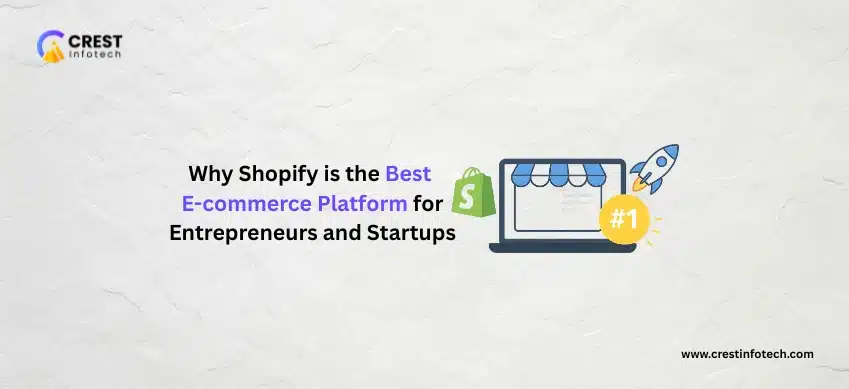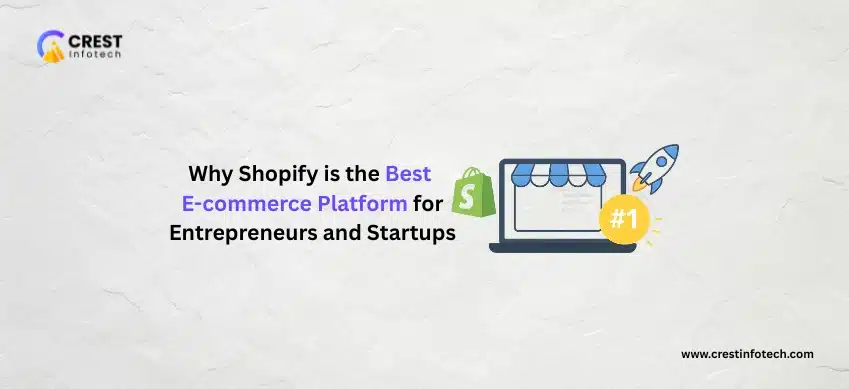Shopify is one of the leading e-commerce platforms, offering a robust set of features out of the box. However, its true power lies in its ability to integrate with a wide range of third-party tools to enhance functionality. Whether you’re looking to optimize marketing, streamline logistics, or boost customer service, integrating Shopify with the right tools can help you elevate your store’s performance. This article explores how to integrate Shopify with some of the most popular third-party tools to create a more dynamic and efficient online business.
1. Email Marketing: Klaviyo and Mailchimp
Effective email marketing is key to engaging customers, driving repeat purchases, and nurturing leads. Shopify’s native email marketing features are useful, but third-party platforms like Klaviyo and Mailchimp offer more advanced capabilities for segmentation, automation, and personalization.
Klaviyo Integration
Klaviyo is highly popular for Shopify stores due to its deep integration and advanced segmentation capabilities.
- How to Integrate: You can connect Klaviyo to Shopify via the Klaviyo app, available in the Shopify App Store. Once integrated, Klaviyo automatically syncs customer data, including order history and browsing behavior.
- Benefits: Klaviyo enables you to create personalized email campaigns and automated workflows, such as abandoned cart emails, welcome series, and product recommendations based on past purchases. Its advanced segmentation allows you to target customers with specific criteria, improving email engagement.
Mailchimp Integration
Mailchimp is another widely used email marketing platform, known for its simplicity and wide range of email templates.
- How to Integrate: While Mailchimp was previously available directly on Shopify, it now requires a third-party connector like ShopSync or Zapier to sync data between Shopify and Mailchimp.
- Benefits: Mailchimp offers tools for designing beautiful emails, as well as automation features for customer engagement. The integration also enables syncing customer data and segmenting email lists based on purchasing behavior or demographic information.
2. Customer Support: Gorgias and Zendesk
Providing excellent customer support is crucial for maintaining customer satisfaction and loyalty. Integrating Shopify with customer service platforms like Gorgias or Zendesk can help you manage customer inquiries more efficiently.
Gorgias Integration
Gorgias is built specifically for e-commerce businesses, making it an ideal choice for Shopify stores.
- How to Integrate: Install the Gorgias app from the Shopify App Store, then connect it to your Shopify store. The integration allows Gorgias to pull in customer data, order details, and browsing history.
- Benefits: Gorgias centralizes customer communication by integrating with email, live chat, social media, and phone support. It also allows you to automate responses to common inquiries (e.g., shipping status) and provides access to customer information from Shopify directly in the chat or email interface, reducing response times.
Zendesk Integration
Zendesk is another widely used customer support tool, offering a broader range of features for larger teams.
- How to Integrate: Zendesk integrates with Shopify through an official app, enabling you to view order details and customer information directly within Zendesk tickets.
- Benefits: Zendesk allows for omnichannel support (email, chat, phone, social), ticket management, and a self-service knowledge base. With the Shopify integration, customer agents can view order history and solve customer issues more efficiently without switching between platforms.
3. Inventory Management: TradeGecko (QuickBooks Commerce) and ShipHero
Managing inventory efficiently is essential for growing e-commerce businesses. Shopify’s built-in inventory management works well for small stores, but third-party tools like TradeGecko (now QuickBooks Commerce) and ShipHero offer more advanced features for larger operations.
TradeGecko (QuickBooks Commerce) Integration
TradeGecko is designed for multichannel inventory management, ideal for businesses managing inventory across multiple locations or selling on different platforms.
- How to Integrate: Connect TradeGecko with Shopify through the QuickBooks Commerce app, available in the Shopify App Store.
- Benefits: TradeGecko offers real-time inventory tracking, purchase order management, and multi-location stock control. It allows you to sync inventory levels across Shopify and other sales channels, reducing the risk of overselling. It also helps streamline your supply chain with automated reordering and demand forecasting.
ShipHero Integration
ShipHero is a warehouse management system (WMS) that integrates seamlessly with Shopify, making it perfect for stores handling their own fulfillment.
- How to Integrate: ShipHero offers a Shopify app that connects your store to the ShipHero WMS platform.
- Benefits: ShipHero automates inventory updates, batch fulfillment, and shipping label creation. It’s particularly useful for high-volume stores that require precise inventory control and streamlined order fulfillment.
4. Social Media Marketing: Facebook and Instagram Shopping
Social media is a powerful channel for e-commerce stores to reach new audiences and drive sales. By integrating Shopify with Facebook and Instagram, you can sell directly on social platforms.
Facebook and Instagram Shopping Integration
Both Facebook and Instagram allow users to shop directly from your store through shoppable posts and ads.
- How to Integrate: You can connect your Shopify store to Facebook and Instagram through the Facebook Channel app on Shopify. This allows you to sync your Shopify product catalog with your Facebook Shop and Instagram account.
- Benefits: Once connected, you can tag products in Instagram posts and stories, allowing users to view and purchase products directly. Facebook also allows you to run dynamic ads featuring Shopify products, driving traffic back to your store. The integration ensures that your inventory and prices are always up to date across social platforms.
5. Shipping and Logistics: ShipStation and AfterShip
Shipping plays a vital role in customer satisfaction. Integrating Shopify with tools like ShipStation and AfterShip can streamline the shipping process and improve tracking capabilities.
ShipStation Integration
ShipStation is a leading shipping software that helps e-commerce businesses process and fulfill orders more efficiently.
- How to Integrate: Install the ShipStation app from the Shopify App Store and connect your shipping carriers to sync order information between Shopify and ShipStation.
- Benefits: ShipStation automates shipping label generation, tracks orders, and manages returns. It supports multiple carriers and allows you to compare shipping rates to find the best options for your customers. ShipStation’s automation features help reduce fulfillment errors and streamline shipping workflows.
AfterShip Integration
AfterShip is a tool that improves post-purchase experience by offering shipment tracking and delivery notifications.
- How to Integrate: You can connect AfterShip to your Shopify store through the official app. It syncs shipping data and allows you to send automatic tracking updates to customers.
- Benefits: AfterShip enhances customer satisfaction by providing real-time tracking information. It supports multiple couriers, allowing customers to track orders from a single dashboard. Additionally, AfterShip offers branded tracking pages, reinforcing your brand identity during the shipping process.
6. Analytics and Reporting: Google Analytics and Hotjar
Understanding customer behavior and store performance is critical to making informed decisions. Shopify’s native analytics provide basic insights, but integrating with tools like Google Analytics and Hotjar can give you a deeper understanding of customer actions.
Google Analytics Integration
Google Analytics is essential for tracking website traffic, user behavior, and conversion funnels.
- How to Integrate: Shopify has built-in support for Google Analytics. You can set it up by adding your Google Analytics tracking code in the Shopify admin under Online Store > Preferences.
- Benefits: Google Analytics provides detailed reports on traffic sources, customer demographics, and conversion rates. When integrated with Shopify, you can set up e-commerce tracking to monitor product performance, abandoned cart rates, and checkout funnels.
Hotjar Integration
Hotjar helps you visualize user behavior on your site through heatmaps, session recordings, and surveys.
- How to Integrate: Use the Hotjar app or manually install the Hotjar tracking code in your Shopify theme.
- Benefits: Hotjar reveals how visitors interact with your store, highlighting areas for improvement. You can use heatmaps to see which elements get the most attention and session recordings to understand how users navigate your site. This information helps optimize your Shopify store for better user experience and higher conversions.
Conclusion
Integrating Shopify with third-party tools allows you to unlock enhanced functionality that can streamline operations, boost sales, and improve customer satisfaction. Whether it’s automating email marketing, managing inventory, or offering better customer support, these tools offer endless possibilities for optimizing your e-commerce store. By leveraging the power of these integrations, you can create a seamless and efficient operation that drives growth and enhances the shopping experience for your customers.



